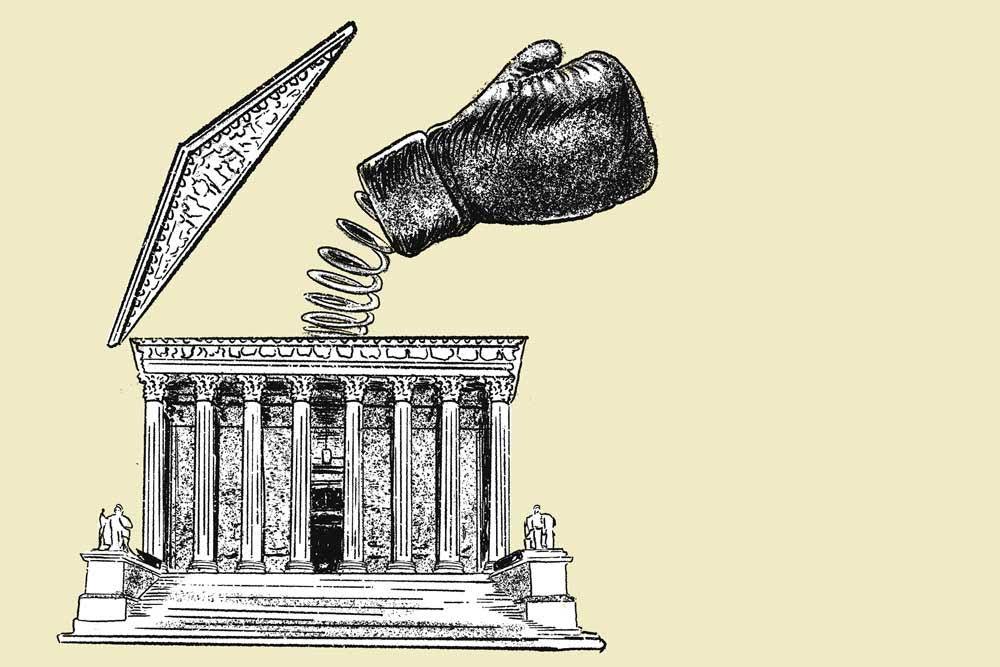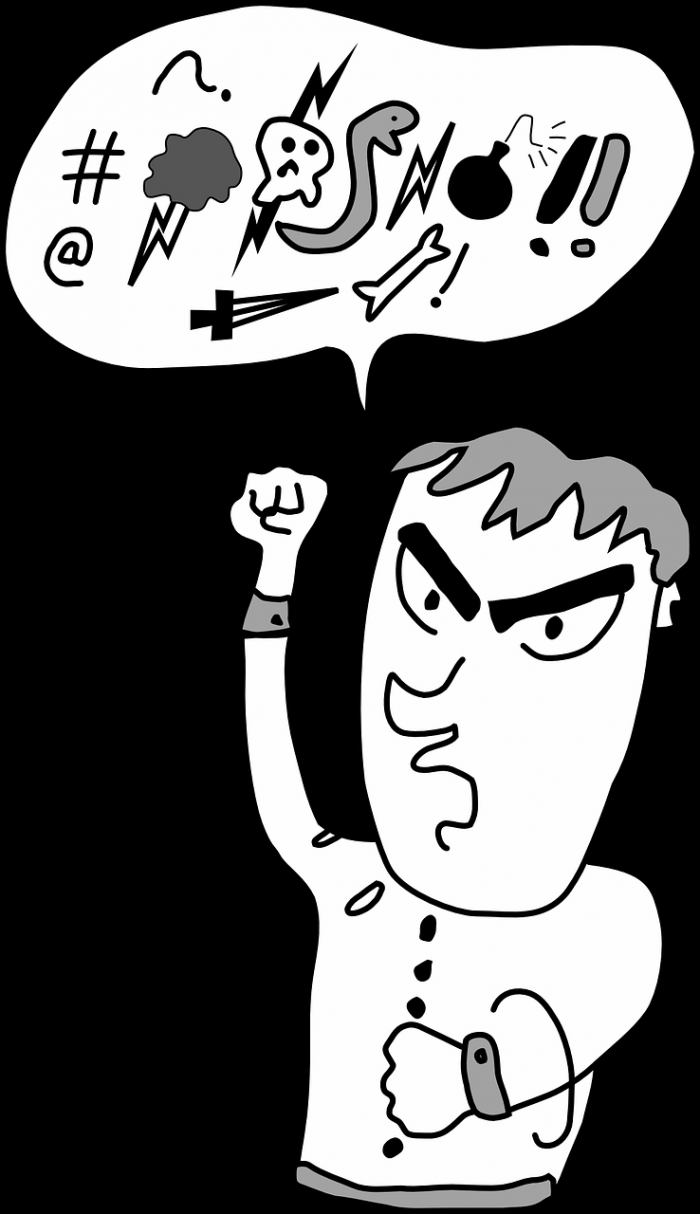Brandenburg v. Ohio (1969) –
Brandenburg Test Ruling – 1st Amendment
In Brandenburg v. Ohio, 395 U.S. 444 (1969), the Supreme Court established that speech advocating illegal conduct is protected under the First Amendment unless the speech is likely to incite “imminent lawless action.”
The Court also made its last major statement on the application of the clear and present danger doctrine of Schenck v. United States (1919). In that case, Justice Oliver Wendell Holmes Jr. had ruled that the government could punish speech if it posed “a clear and present danger of bringing about the substantive evils that Congress may prohibit.”
Brandenburg was convicted for his speech to Klan members

Clarence Brandenburg had addressed a small gathering of Ku Klux Klan members in a field in Hamilton County, Ohio. During the address, which was recorded by invited media representatives,
Brandenburg bemoaned the fate of the “White Caucasian race” at the hands of the government.
He made anti-Semitic and anti-black statements and alluded to the possibility of “revengeance” (sic) in the event that the federal government and Court continued to “suppress the white, Caucasian race.” He also announced that the Klan members were planning to march on Washington, D.C., on Independence Day.
Brandenburg was convicted of violating Ohio’s Criminal Syndicalism law, which made it a crime to “advocate . . . the duty, necessity, or propriety of crime, sabotage, or unlawful methods of terrorism as a means of accomplishing industrial or political reform.” He was fined and sentenced to serve one to 10 years in prison.
Supreme Court overturned conviction
Although the case was ultimately important in First Amendment jurisprudence, the Brandenburg matter received little attention in the Ohio court system. With the help of the American Civil Liberties Union (ACLU) and others, Brandenburg appealed to the Ohio intermediate appeal court, which upheld his conviction without opinion.
The Ohio Supreme Court declined to hear the issues, saying in its dismissal that the case presented “no substantial constitutional question.” The U.S. Supreme Court disagreed, and granted certiorari in 1968.
The Court’s unsigned, per curiam opinion was presumably drafted by Justice Abe Fortas, who had resigned by the time the final decision was handed down. The eight remaining members of the Court unanimously overturned Brandenburg’s conviction and issued a new test for all future restrictions on speech.
Court issued new ‘imminent lawless action’ speech test
Henceforth, advocacy could be punished only “where such advocacy is directed to inciting or producing imminent lawless action and is likely to incite or produce such action.” In so deciding, the Court specifically overruled Whitney v. California (1927), a case in which a woman had been convicted of belonging to a syndicalist organization in violation of a California law.
The Court, however, did not explicitly overrule Dennis v. United States (1951), which had upheld the convictions of Communist Party leaders even though the danger their speech posed was far from imminent.
In Dennis, the Court said that the correct interpretation of the clear and present danger doctrine allowed legislatures to decide what was dangerous; the courts in applying the clear and present danger test were simply to determine whether, on balance, the “gravity of the ‘evil,’ discounted by its improbability, justifies such invasion of free speech as is necessary to avoid the danger.” In fact, in Brandenburg, the Court cited Dennis as good law.
The Court is loath to overturn decisions it has made in recent memory, and Brandenburg was decided only 17 years after Dennis. Scholars are divided on whether Brandenburg essentially empties Dennis of any content, or merely restricts it to its particular context, that of a struggle against a large and well-organized worldwide movement.
Justice Hugo L. Black filed a brief concurrence in Brandenburg, stating his opinion that “the ‘clear and present danger’ doctrine should have no place in the interpretation of the First Amendment.” Justice William O. Douglas wrote a separate concurrence agreeing with this sentiment.
This article was originally published in 2009. James L. Walker (1942-2019) taught political science at Wright State University for 33 years. cited https://mtsu.edu/first-amendment/article/189/brandenburg-v-ohio
To Learn More…. Read MORE Below and click the links
Learn More About True Threats Here below….
We also have the The Brandenburg v. Ohio (1969) – 1st Amendment
CURRENT TEST = We also have the The ‘Brandenburg test’ for incitement to violence – 1st Amendment
We also have the The Incitement to Imminent Lawless Action Test– 1st Amendment
We also have the True Threats – Virginia v. Black is most comprehensive Supreme Court definition – 1st Amendment
We also have the Watts v. United States – True Threat Test – 1st Amendment
We also have theClear and Present Danger Test – 1st Amendment
We also have theGravity of the Evil Test – 1st Amendment
We also have the Elonis v. United States (2015) – Threats – 1st Amendment
Learn More About What is Obscene….
We also have the Miller v. California – 3 Prong Obscenity Test (Miller Test) – 1st Amendment
We also have the Obscenity and Pornography – 1st Amendment
Learn More About Police, The Government Officials and You….
We also have theBrayshaw v. City of Tallahassee – 1st Amendment – Posting Police Address
We also have thePublius v. Boyer-Vine –1st Amendment – Posting Police Address
We also have the Lozman v. City of Riviera Beach, Florida (2018) – 1st Amendment – Retaliatory Police Arrests
We also have the Nieves v. Bartlett (2019) – 1st Amendment – Retaliatory Police Arrests
We also have the Freedom of the Press – Flyers, Newspaper, Leaflets, Peaceful Assembly – 1st Amendment
We also have the Insulting letters to politician’s home are constitutionally protected, unless they are ‘true threats’ – 1st Amendment
We also have the Introducing TEXT & EMAILDigital Evidencein California Courts – 1st Amendment
We also have the First Amendment Encyclopedia very comprehensive – 1st Amendment
ARE PEOPLE LYING ON YOU? CAN YOU PROVE IT? IF YES…. THEN YOU ARE IN LUCK!
We also have the Penal Code 118 PC – California Penalty of “Perjury” Law
We also have theFederal Perjury – Definition by Law
We also have the Penal Code 132 PC – Offering False Evidence
We also have the Penal Code 134 PC – Preparing False Evidence
We also have thePenal Code 118.1 PC – Police Officers Filing False Reports
We also have the Spencer v. Peters– Police Fabrication of Evidence – 14th Amendment
We also have the Penal Code 148.5 PC – Making a False Police Report in California
We also have the Penal Code 115 PC – Filing a False Document in California
Know Your Rights Click Here (must read!)
Under 42 U.S.C. $ection 1983 – Recoverable Damage$
42 U.S. Code § 1983– Civil Action for Deprivation of Right$
$ection 1983 Lawsuit – How to Bring a Civil Rights Claim
18 U.S. Code § 242 – Deprivation of Right$ Under Color of Law
18 U.S. Code § 241 – Conspiracy against Right$
$uing for Misconduct – Know More of Your Right$
Police Misconduct in California – How to Bring a Lawsuit
New Supreme Court Ruling – makes it easier to sue police
RELATIONSHIPWITH YOURCHILDREN& YOURCONSTITUIONAL RIGHT$ + RULING$
YOU CANNOT GET BACK TIME BUT YOU CAN HIT THOSE PUNKS WHERE THEY WILL FEEL YOU = THEIR BANK
We also have the 9.3 Section 1983 Claim Against Defendant as (Individuals) — 14th Amendment thisCODE PROTECTS all US CITIZENS
We also have the Amdt5.4.5.6.2 – Parental and Children’s Rights 5th Amendment thisCODE PROTECTS all US CITIZENS
We also have the 9.32 – Interference with Parent / Child Relationship – 14th Amendment thisCODE PROTECTS all US CITIZENS
We also have the California Civil Code Section 52.1Interference with exercise or enjoyment of individual rights
We also have the Parent’s Rights & Children’s Bill of RightsSCOTUS RULINGS FOR YOUR PARENT RIGHTS
We also have a SEARCH of our site for all articles relatingfor PARENTS RIGHTS Help!
Contesting / Appeal an Order / Judgment / Charge
Options to Appealing– Fighting A Judgment Without Filing An Appeal Settlement Or Mediation
Cal. Code Civ. Proc. § 1008 Motion to Reconsider
Penal Code 1385 – Dismissal of the Action for Want of Prosecution or Otherwise
Penal Code 1538.5 – Motion To Suppress Evidence in a California Criminal Case
CACI No. 1501 – Wrongful Use of Civil Proceedings
Penal Code “995 Motions” in California – Motion to Dismiss
WIC § 700.1 – If Court Grants Motion to Suppress as Evidence
 Epic Criminal / Civil Rights SCOTUS Help – Click Here
Epic Criminal / Civil Rights SCOTUS Help – Click Here
 Epic Parents SCOTUS Ruling – Parental Rights Help – Click Here
Epic Parents SCOTUS Ruling – Parental Rights Help – Click Here
